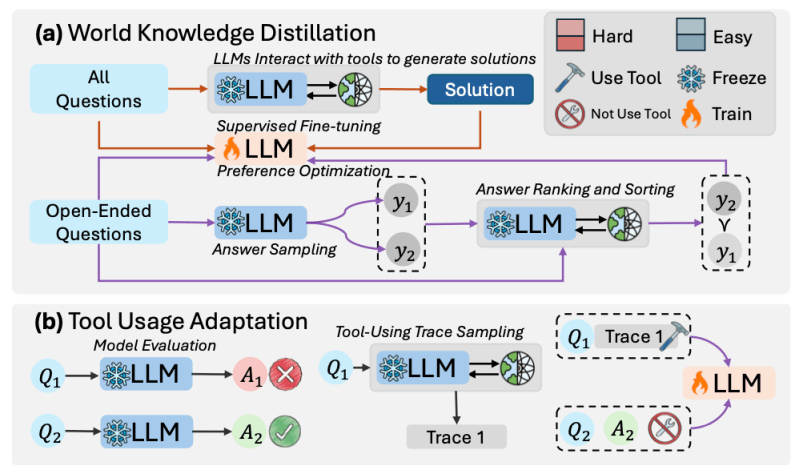Join our daily and weekly newsletters for the latest updates and exclusive content on industry-leading AI coverage. Learn More Cybever, a startup offering a platform for creating 3D environments using generative AI, and Cloud Zeta, a separate cloud hosting service designed specifically to host memory-intensive 3D assets and said environments, have announced a major partnership to develop a web-based platform that simplifies the creation of immersive 3D scenes for entertainment and industrial use cases. Scheduled for public rollout in the first quarter of 2025, the upcoming joint tool combines Cybever’s AI-driven world-building platform with Cloud Zeta’s advanced 3D data management infrastructure, leveraging a common 3D asset standard, OpenUSD, for seamless interoperability. The partnership addresses long-standing challenges in 3D content creation, including high costs, complex workflows, and compatibility barriers. “With OpenUSD and cloud infrastructure, we believe 3D data management will become more accessible,” said Jiwen “Steve” Cai, co-founder and CEO of Cloud Zeta, in a video call interview with VentureBeat. “Our goal is to empower companies across industries to use 3D without breaking the bank.” By integrating AI automation with scalable cloud infrastructure, the platform enables creators from gaming, film, industrial design, and beyond to produce 3D environments faster, at lower cost, and with less formal graphics training needed. “Our mission is to democratize 3D world creation, empowering everyone to quickly and easily create their own virtual 3D environments for gaming, movies, education, and more,” added Jie Yang, co-founder and chief technology officer (CTO) of Cybever. The plan is to empower 3D graphics creators across a wide range of industries — not only in gaming, film, and entertainment, but also in engineering, modeling, and even architecture, construction, and product development. “Another major sector is industrial applications,” Cai noted. “Almost anything you can buy today, from Walmart or other mass-produced goods, involves a 3D model in its production pipeline—that’s the concept of a digital twin. For example, BMW is creating a massive digital twin of their entire factory to optimize workflows. It’s a huge market with strong paying potential, and 3D data plays a crucial role in improving production efficiency.” A match made in AI-generated 3D heaven The joint product makes sense given the differing but complimentary strengths of the two California-based startups, founded in 2022 (Cybever) and 2024 (Cloud Zeta), respectively. For example, Cybever’s platform allows 3D asset designers to easily upload their creations to it and then place them into a wide variety of different 3D environments, including some generated on-the-fly with AI models and a user’s text prompts. “Today, creating 3D environments is very difficult,” Yang explained. “We’re building a tool where anyone can describe an idea, draw a few sketches, and have a 3D world created in about 15 minutes.” Cloud Zeta, on the other hand, focuses on resolving the data challenges that arise when combining 3D assets designed by a number of different software programs, often with different data formats and levels of detail. “3D is not just a piece of video or image,” Cai noted. “”It’s more complicated metadata—all these assets are intertwined and interlinked with each other. Today, there are dozens of different 3D formats that aren’t directly interpretable. For example, users need to visualize an asset, inspect its complexity, polygon count, and material properties—there’s a lot of deep, 3D-specific metadata and information that public cloud providers don’t handle.” Instead, Cloud Zeta uses “public clouds to handle low-level needs, but we bring in 3D-specific expertise to make the product useful for companies,” he noted. “his is why a vanilla cloud service doesn’t suffice for handling 3D data.” Solving compatibility challenges The new joint Cybever-Cloud Zeta platform utilizes the OpenUSD standard, a universal 3D format that fosters compatibility across tools and industries. “OpenUSD is like HTML for 3D,” Cai noted. “It enables interoperability across tools and industries, and our role is to make it accessible through the web. Cloud Zeta is the only platform that allows people to work with OpenUSD directly in a browser, integrated with cloud infrastructure.” This capability aligns with Cybever’s focus on usability and accessibility. “We’re not creating individual 3D assets from scratch,” Yang clarified. “Instead, we assemble and design layouts, placing thousands of objects to create complex environments. Our focus is on making this process web-based and cloud-based, accessible from any browser.” The collaboration also addresses the demand for integrating custom assets. “Our users, like game studios, often want to use their own assets in the environments we create,” Yang added. “However, ensuring compatibility across formats and engines like Unreal or Unity is a major challenge. That’s where Cloud Zeta’s technology comes in—they help standardize and verify assets for seamless integration.” Building an open ecosystem for the future Cybever and Cloud Zeta’s platform is part of a broader movement toward 3D standardization. “Our collaboration is an example of how OpenUSD is fostering partnerships across industries,” Cai noted. “It’s about building a network where companies can share, exchange, and collaborate on 3D data seamlessly.” Yang highlighted the importance of bringing legacy 3D data into the future: “3D has been around for decades, and there are countless old formats,” Yang said. “The goal is to move this data into OpenUSD so future AI-powered 3D creation can reuse these assets effectively.” The companies also envision a future where 3D tools are more accessible to smaller businesses and non-professional creators. “With Open USD and cloud infrastructure, we believe 3D data management will become more accessible,” Cai said. “Our goal is to empower companies across industries to use 3D without breaking the bank.” source











